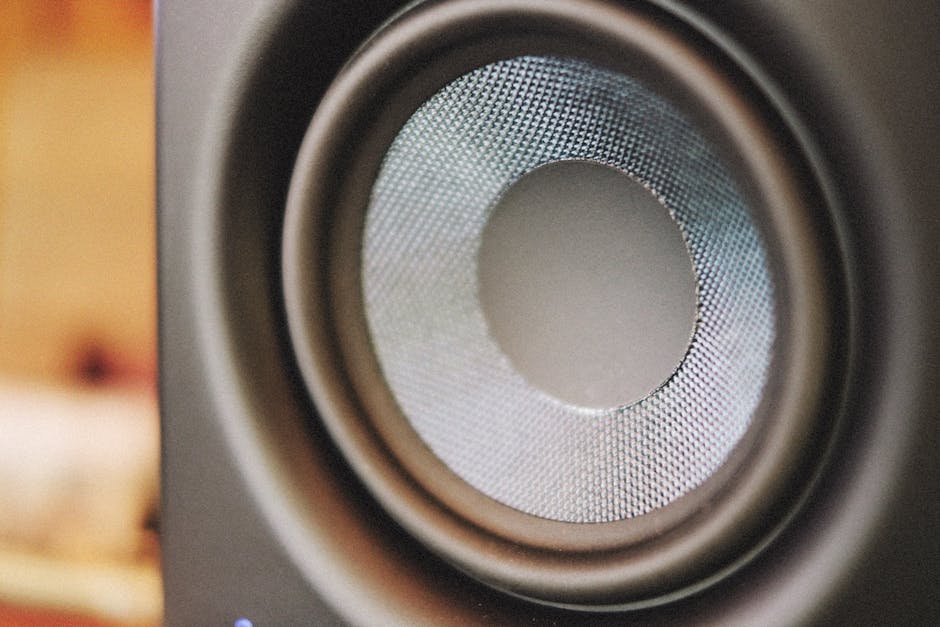Step into the realm of sound quality, where the subtle nuances of sound clarity and fidelity are brought to life through the concept of Speaker Signal-to-Noise Ratio (SNR). Discover how this crucial element impacts your listening experience, and delve into the intricate world of audio precision and excellence.
Understanding Speaker SNR and Its Impact
Speaker Signal-to-Noise Ratio, often abbreviated as SNR, is a fundamental metric in audio engineering that defines the ratio of the desired sound signal to the background noise present. In simpler terms, SNR measures the clarity and purity of sound produced by a speaker system. A higher SNR indicates a cleaner and more accurate audio output, while a lower SNR introduces unwanted noise and distortion into the listening experience.
When the SNR of a speaker is optimal, it means that the sound produced is true to the original recording, free from interference or added noise. This leads to a more immersive listening experience where every detail, from the deepest bass tones to the highest trebles, is faithfully reproduced. Understanding Speaker SNR is key to appreciating the full depth and richness of audio content.
One of the primary impacts of Speaker SNR on your listening experience is the level of detail and precision in sound reproduction. A higher SNR enables speakers to articulate subtle nuances in music, such as delicate instrumental textures and nuanced vocals, with exceptional clarity. This fidelity to the original recording elevates the listener’s immersion and engagement with the audio content.
So what’s considered a good and bad SNR? Typically, under 25dB is considered a poor quality SNR, and over 40 is considered to be excellent. Dio Node, for example, has an SNR of 85dB and is considered an excellent sounding speaker.
Choosing the Right Speakers for Optimal Sound Quality
Selecting speakers with a high Signal-to-Noise Ratio is paramount in creating an audio setup that delivers exceptional sound quality. When exploring speaker options, pay close attention to the SNR specifications, as this metric directly influences the purity and accuracy of the sound produced.
In addition to SNR, factors such as speaker sensitivity, frequency response, and power handling capabilities play a crucial role in determining the overall audio performance. By combining speakers with high SNR values with components that complement their strengths, you can tailor your listening environment to achieve optimal sound reproduction.
Moreover, understanding how Speaker SNR interacts with other technical aspects of audio equipment, such as amplifiers and source devices, can further enhance the synergies within your audio setup. By harmonizing these elements, you can create a cohesive audio ecosystem that maximizes the potential of your speakers and elevates your listening experience.
When exploring speaker options, consider the intended use case and environment in which the speakers will operate. Whether it’s for critical listening in a dedicated home theater or immersive gaming experiences in a multimedia setup, tailoring your speaker selection to meet the specific demands of your audio preferences can significantly enhance your overall satisfaction with the sound output.
Enhancing Your Listening Environment Through SNR Optimization
Optimizing Speaker SNR involves a combination of strategic speaker placement, acoustic considerations, and calibration processes to create an environment that maximizes sound fidelity and minimizes unwanted noise interference. By fine-tuning these elements, you can transform your listening space into a haven of sonic excellence.
Strategic placement of speakers, taking into account factors such as room acoustics and listener positioning, plays a crucial role in optimizing SNR. By positioning speakers for balanced sound dispersion and minimizing reflections or obstructions, you can enhance the clarity and accuracy of the audio reproduction within your space.
In addition to physical placement, acoustic treatments such as sound-absorbing panels, bass traps, and diffusers can further refine the acoustics of your listening environment. These additions help mitigate sound reflections, standing waves, and other acoustic anomalies that can degrade the overall SNR of your speaker system.
Calibrating your speakers to account for room dynamics and acoustic peculiarities is another essential step in SNR optimization. Utilizing tools like audio calibration microphones and room correction software, you can fine-tune speaker settings to compensate for room acoustics and achieve a more precise and balanced audio output.
By embracing the art of Speaker SNR optimization, you embark on a journey towards unlocking the full potential of your audio setup. From immersive music listening sessions to cinematic movie experiences, the impact of SNR on your listening enjoyment is profound, shaping the way you perceive and interact with sound in its purest form.
Harmonizing Sound Quality
In the symphony of audio technology, Speaker Signal-to-Noise Ratio stands out as a key conductor, orchestrating the balance between pristine sound reproduction and unwanted background noise. By understanding and optimizing SNR, you can unlock a realm of immersive listening experiences where every note, every tone, resonates with crystal clarity.

